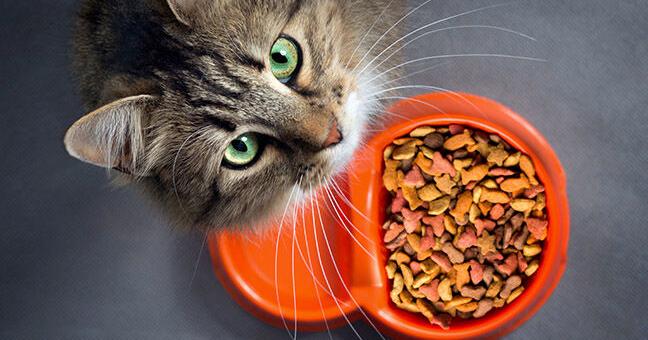- October 2, 2022
- No Comment
- 7 minutes read
What's New in Feline Nutrition? Diets | Current Issue | petbusiness.com – Pet Business Magazine

Long ago, there were two types of cat food: kibble or canned. Today, though, cat owners know there is much more to feline diets than dry or wet, and these consumers are eagerly gathering information about what’s best for their furry friends. Manufacturers have responded with a plethora of choices, and—to help drive sales—information about feline diets and how to meet cats’ nutritional needs.
The challenge lately has been that inflation is making everything, including pet foods, more expensive than in the past. According to Packaged Facts’ recent report, U.S. Pet Market Focus: Pet Stores & Pet Specialty Retailing, the U.S. pet industry had its most significant growth ever in 2021. According to the report, 59 percent of pet owners reported spending more on pet products than they used to, up from 45 percent saying the same thing in 2021.
On a positive note, although much of this increase is due to inflation, cat owners may simply be spending more because they want premium products for their beloved felines. Kate McCarron, founder of Portland Pet Food Company, says these consumers are looking for a diet that has high quality proteins, meets the cat’s hydration needs, and has an easy-to-understand ingredient list on the label.
“Customers are much more aware of fillers and poor quality proteins that are used in many pet foods,” says McCarron, whose title is top dog. “They are searching for better natural healthy solutions to provide to their cats.”
Portland Pet Food Company makes nutritious dog food with locally sourced, natural ingredients, and recently added cat meals to the lineup. The new meals/toppers are Luke’s Chicken N’Pumpkin and Boot’s Salmon N’Pumpkin Homestyle Cat Meals, which are made with human grade USA sourced ingredients. The meals are in pouches and can be served as a supplemental meal, topper or mixer.
“Our innovation is based upon the belief of using only limited whole food ingredients that are edible for human consumption assuring that our products contain high quality nutrients without adding synthetic vitamins or minerals or sacrificing quality,” McCarron says.
Cat owners expect a lot from feline nutrition.
“Cat parents see their pets as members of their family, and the food they feed as an investment in their cat’s life and longevity,” says Billy Frey, director of marketing for ORIJEN and ACANA pet foods. “Quality ingredients have functional benefits, which decreases the need for supplementation with synthetics, and cat parents are looking for premium food that delivers that benefit.”
These consumers are also looking for variety, Frey says, because they need to satisfy the cat’s palate. Also, it’s important to include liquid in the meal because cats have a naturally low thirst drive. With that in mind, ORIJEN and ACANA pet foods, part of the Champion Petfoods family, offer a variety of premium wet and dry foods for cats. ORIJEN Wet Cat Food is a pate with 95 percent WholePrey animal ingredients and topped with shreds of meat, poultry, or fish. ORIJEN Wet Cat Food is available in five diets, including Original, Regional Red, Duck & Chicken, Tuna, Salmon & Beef, and a kitten-specific Chicken & Salmon diet. ACANA Premium Pate has 85 percent premium animal ingredients, and is rich in Omega 3 and 6 from salmon oil. There is bone broth for hydration and flavor, and the six recipes are Chicken & Fish, Beef, Chicken & Tuna, Lamb & Lamb Liver, Tuna & Chicken, Salmon & Chicken, and a kitten-specific Chicken & Tuna recipe.
Offering variety is a good strategy with any consumer category, but it’s crucial with feline diets. “Cats can often be more finicky than their canine counterparts,” says Bryan Nieman, brand director for Fromm Family Foods. The company is seeing continued demand for canned products in a variety of flavors and textures.
Nieman says pet parents are evaluating foods based on the quality of ingredients and the company’s safety and manufacturing practices, to ensure they are feeding a safe and high-quality diet. The brand debuted Fromm Indoor Cat Gold earlier this year. The formulation is designed to provide complete and balanced nutrition with a unique fiber blend including Miscanthus Grass to assist in hairball management.
Consumers are looking for information about ingredients and other details related to feline diets. Retailers can succeed in the space by offering not only the right assortment of high quality foods, but by being a good source of education. For example, Frey, from ORIJEN and ACANA pet food, points out that retailers should know that cats are obligate carnivores, so they require a diet rich in animal ingredients.
Store staff should read the ingredient and nutritional panels on the pet foods.
“It tells them exactly what they need to know about the quality of nutrition the brand offers,” Frey says. “Knowing to look for ingredients that offer natural sources of nutrients, like EPA and DHA from wild-caught fish for a healthy skin and coat, for example, is beneficial to the pet.”
Retailers should also work to remind consumers about the importance of helping the cat stay hydrated. McCarron, from Portland Pet Food Company, recommends cross marketing such as placing wet food/toppers with toys.
“Placement of wet food/toppers can complement the dry food aisle to add hydration to a dry diet and to help make it more palatable,” she says.
By gaining knowledge about the products they carry, retailers can make honest and helpful recommendations to cat owners who are seeking advice.
“Retailers who lead with sincerity and speak from experience will foster better relationships with their customers,” says Nieman. PB
Sorry, there are no recent results for popular videos.

